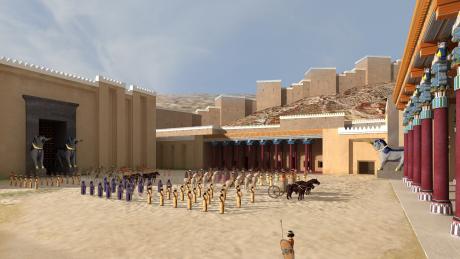
To mark Mehregan the festival of Mithra, Mithras Reader: An Academic
and Religious Journal of Greek, Roman and Persian Studies, Volume III is now out. Wishing everyone a happy Mehregan.
It contains several ground breaking papers on Persian History and Archaeological studies. It covers new study of the Sassanian Fire Temple of Rivand in Sabzevar, Iran; The Zoroastrian Holyland of Haetumant in Iran; The Achaemenid Grand Strategy, Anahita Lady of Persia; to name some.
Full details at: http://www.lulu.com/product/paperback/mithras-reader-vol-3-an-academic-and-religious-journal-of-greek-roman-and-persian-studies/12447758
Table of
Contents
Editorial
5
Contributors
Biographies 8
Part 1:
Academic Papers 14
A Journey
to the Hypercosmic side of the Sun by Prof Ezio Albrile 15
Internet
and the Resurrection of a God: the Neo-Mithraic Communities by Dr. Israel
Campos 28
Aristotle
and the Natural Slave: The Athenian Relationship with India by Robert F.
Mullen, M.A. 35
The Dawn
of Religions in Afghanistan-Seistan-Gandhara and the Personal Seals of Gotama
Buddha and Zoroaster by Dr. Ranajit Pal 62
Dacia and
the cult of Mithras by Csaba T. Szabó 84
Sun Tzu
and the Achaemenid Grand Strategy by Sheda Vasseghi 98
Zen
Buddhism and Mithraism by Dr. Masato Tōjō 114
A New
Archaeological Research of the Sassanian Fire Temple of Rivand in Sabzevar, by
Hassan Hashemi Zarjabad, Farhang khademi Nadooshan, Seyed Mehdi Mousavi, Javad
Neyestani, Syed Sadrudin Mosavi Jashni,
Barbara Kaim 144
The
Zoroastrian Holyland of Haetumant by Reza MehrAfarin, Seyyed Rasool Mousavi
Haji, and Javad Neyestani 180
The
Archaeological Evidence in Tarik Dareh (Dark Valley), in Hamadan, Iran, by
Masoud Rashidi Nejad and Amirhossein Salehi 196
Part 2:
Arts 203
Kephra by
Akashanath 204
Modern
Altars by Ana C Jones 210
Part 3:
Religious Articles, Poems, and Stories 212
Into The
Looking Glass Tragic Reflections of Life by Lesley Madytinou 213
Solomon
in Olympus: The Enduring Connection between King Solomon and Greek Magic by
David Rankine 229
Orphic
Hymn to Aphrodite translated by Harita Meenee 234
The
Athenian Festivals of Demeter by Melissa Gold 236
The
Lioness by Jane Raeburn 246
Anahita:
Lady of Persia by Payam Nabarz 256
Origin of
the Gathas of Asho Zarathustra by Farida Bamji 268
Mehrgan
by Farida Bamji 272
A Prayer
for Initiation by Katherine Sutherland 274
Here is an excerpt from one of the papers:
Sun Tzu
and the Achaemenid Grand Strategy by Sheda Vasseghi
Introduction
Although between the rise and fall of the Achaemenid Persian
Empire (550-330 BCE) military
weapons, techniques, and recruitment evolved to meet the empire’s needs, the
key components of its military strategy remained intact. Some of those
key components are interestingly echoed in The Art of War, a manual attributed to
Sun Tzu (5th c. BCE), a Chinese philosopher-general. This paper will
examine notable similarities between the teachings in The Art of War
and the Achaemenid military warfare.
Competition and the need for excellence are natural human
desires. Competition and desire to excel bring progress to mankind.
It is the fuel for human social evolution. The reasons as to why a
group conquers another vary, but the end result is the same rendering the
catalyst insignificant. In modern era, old fashioned territorial
conquests have been replaced with technological and scientific warfare as
nations compete for limited resources to gain the upper hand in economic
advantages which directly affect social advancement. What is important is
how these conquests are made to minimize trauma and chaos while
establishing order as quickly as possible.
The Art of
War is a revered manual mastering strategy during
conflict. Its lessons on how to remain victorious or survive at
best is timeless. Its lessons are directed to leaders both in military
and civilian capacities, and to citizens, who should not underestimate the
importance of a strong and competent military for the survival of their
society.
The Achaemenid
Persian Empire was the first world empire covering 23 nations spread across
approximately 3,000,000 square miles stretching from North Africa to Indus
Valley. Sun
Tzu, 1988. The Art of War, Thomas Cleary (transl.), Boston, MA: Shambhala
Publications, Inc., pp. 66-67.






